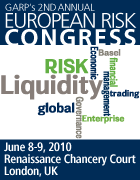1. Markets are always smarter than regulators.
Too much regulation spurs bad innovation. If regulation is onerous, costs of adherence are high, and firms perceive a shift in competitiveness, then expect markets (the good guys and the bad guys) to find ways to circumvent it. Also, much of the day-to-day function at Regulators is focused on magnifying-glass level examination of details; whereas the need here is to have a broader macro-perspective of how “it” all fits together, where “it” is much more than any regulatory form, any individual bank and even the banking system.
2. Are the right products regulated? In the right way?
What is a ‘standard’ derivative, in the context of the move to exchanges and clearing-houses? Standard derivatives didn’t cause the crisis at any individual institution. At a systemic level arguably they did, in the volume and liquidity sense. Complex and exotic products, not regulated because nobody has figured out how, are often the serious offenders.
3. There is as yet no way to measure the overall health, and level of systemic risk, in the market.
Ex-ante, who knows what systemic risk is. Regulators are currently unable to even pull together a comprehensive view of the market. And if we do get a market-level aggregate report, when is the light going to turn from orange to red. Some absolute level decided by the Fed? At the level of each instrument? At the change of the light, will the Fed via individual regulators go back to firms and demand action. What action? And so, are we about to see a hitherto undefined conflict between regulation of an institution versus regulation of the market as a whole?
4. National regulators do not talk to each other, not enough, not effectively
One key lesson from the recent crisis seems to be that risk and flows and financial markets are global, whereas most regulation is national and often nationalistic. This brings another central point to the discussion, a single regulator versus a committee of them.





